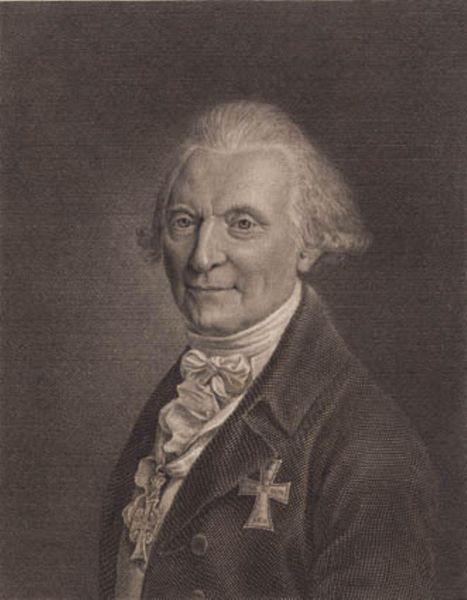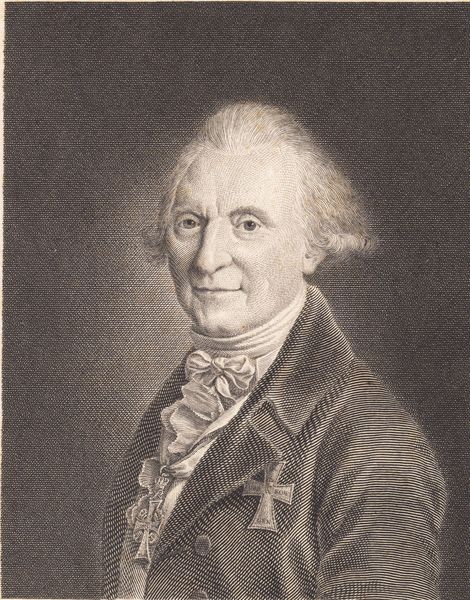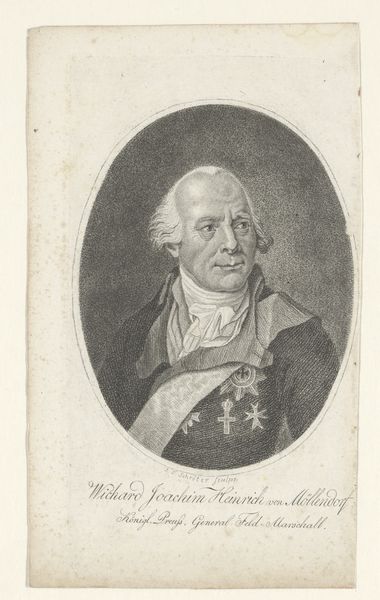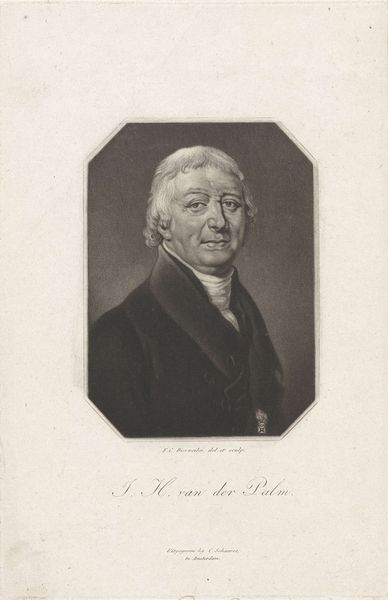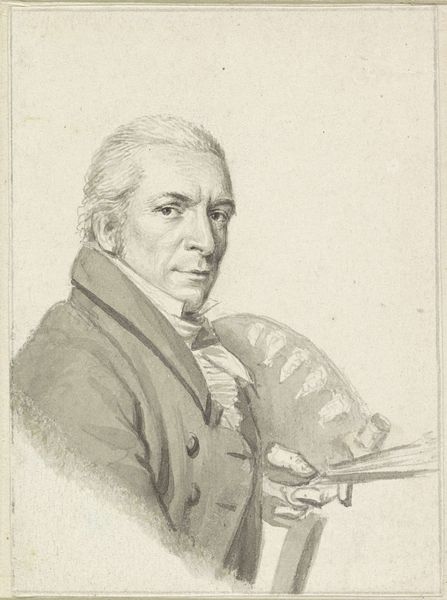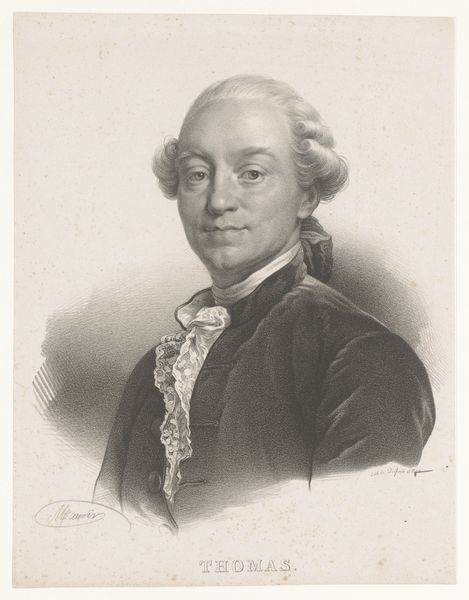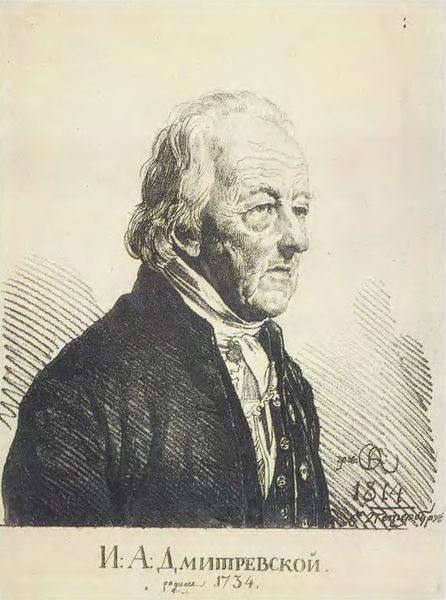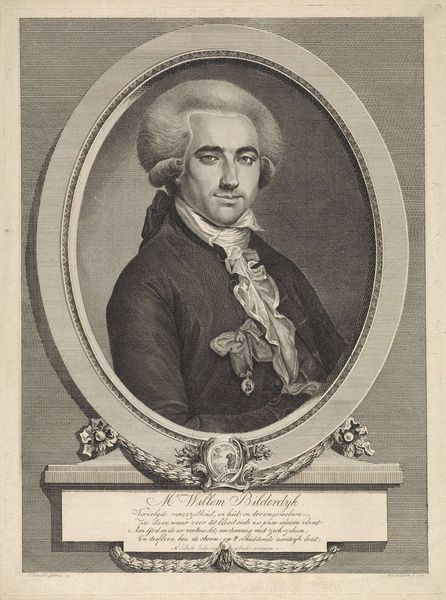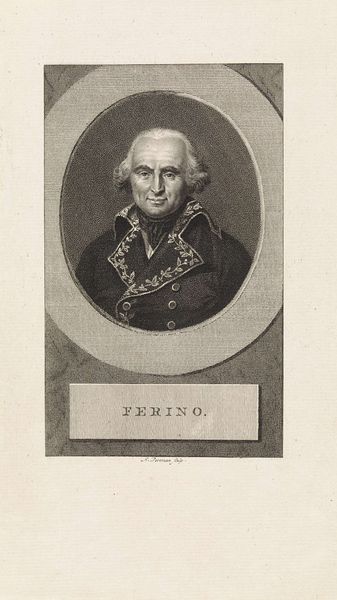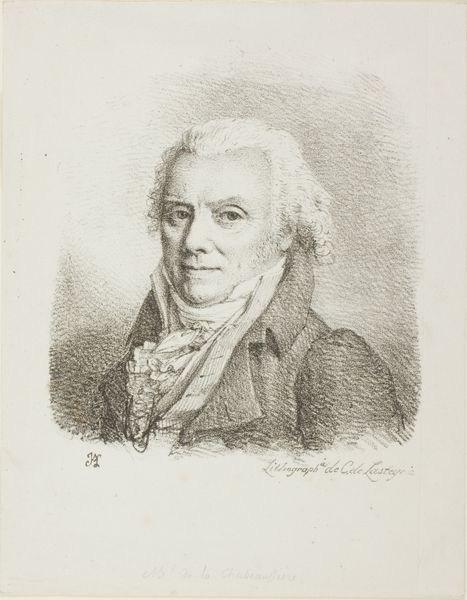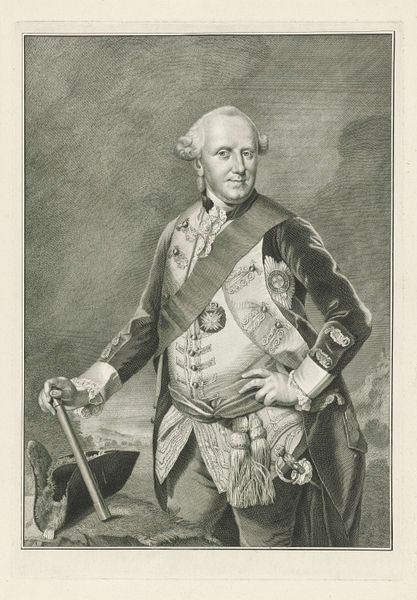
print, etching
#
portrait
#
neoclacissism
# print
#
etching
Dimensions: 282 mm (height) x 213 mm (width) (bladmaal), 241 mm (height) x 176 mm (width) (plademaal), 176 mm (height) x 139 mm (width) (billedmaal)
Curator: Looking at this etching, I'm struck by the rather serious yet wise countenance of the subject, a figure neatly positioned against what appears to be a dense, dark background. Editor: Indeed. What we're observing here is "Ove Malling," a print dating back to 1810. It was realized by J.F. Clemens and currently resides in the collection of the SMK, the Statens Museum for Kunst. It's an etching, so quite meticulously rendered. Curator: Clemens captured the man's dignity, though there is a somewhat softened expression that invites a feeling of intimacy... like peering into a bygone era, imagining Malling himself sitting for the artist. There’s almost a ghostly quality to the details. Editor: Right, that “ghostly quality” points directly to Neoclassicism's obsession with form, order, and clarity. There's a distinct emphasis on rationality and civic virtue... evident in the way Malling is posed and presented, as a kind of enlightened patriarch. His gaze is assured but also carries the weight of responsibility, echoing the stoic ideals of the era. Note that medal he’s wearing; it symbolizes status and recognition. Curator: I can appreciate the technique involved here... particularly those delicate lines etched to create texture and shadows. There is a subtle contrast in tones and values. Editor: And think about who Ove Malling was! He was an historian and civil servant who served as secretary to the Danish Treasury... quite the accomplished figure. Curator: Which only deepens the resonance of the piece... and gives us further appreciation. He seems a study in how power and enlightenment coalesce during that pivotal era. Editor: Exactly. Clemens gives us Malling not merely as an individual, but as a representation of enlightened governance and civic responsibility, situated right in the middle of shifting social dynamics. Thanks to art history we have new understanding of ourselves today. Curator: It does indeed feel as if Clemens wanted to distill not just the essence of the man, but a whole social structure within the boundaries of this modest etching. It’s not just art, it's history whispering through carefully crafted lines.
Comments
No comments
Be the first to comment and join the conversation on the ultimate creative platform.
